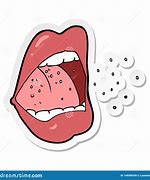Common Cold, Flu and Oral Health
Well, it’s that time of year when the common cold and flu is at its best. To defending the body against these viral nuisances symptoms arise which can be harmful to the oral cavity. Many symptoms are congestion, runny nose, postnasal drip, dry mouth, bad breath, cough, loss of taste and smell, vomiting, and nasal and sinus inflammation.
What does this all mean for the mouth? Harm, destruction, and possible tooth pain.
Sinus issues brought on by anything whether it’s allergies, polyps, a cold, or the flu can cause pressure onto the upper, mainly back teeth (molars). The roots of the molars are right at the sinus cavity or well into the sinus cavity and can be the victim of mucus filled and inflamed maxillary sinuses. When these normally air-filled cavities become mucus-filled the weight and pressure onto the roots of the upper molars increase resulting in pain or sensitivity to the teeth. This can also cause referred pain to the bottom teeth. When we bite down with our teeth and put pressure on them it can feel like the bottom teeth are just as sore. Sinus tooth pain presents as a dull, continuous discomfort, increased when moving the head or looking down, usually isolated to the upper posteriors, and accompanied with other symptoms associated with sinuses.
While an abscessed tooth increases and intensifies pain to biting, chewing and temperature, specifically with a single tooth. Being aware of a sinus related tooth pain versus an actual tooth pain can save unnecessary treatment.
While an abscessed tooth increases and intensifies pain to biting, chewing and temperature, specifically with a single tooth. Being aware of a sinus related tooth pain versus an actual tooth pain can save unnecessary treatment.
Ear infections can cause referred pain and mimic tooth and jaw pain as they are all so close in proximity to each other.
With a congested nose it limits breathing capacity and increases mouth breathing which causes dry lips, tongue, tissue, throat and teeth. Without saliva to wash and moisten the mouth plaque and bacteria sticks to the teeth more so and causes discomfort and altered taste.
Bad breath forms from a dry mouth and post-nasal drip during a sickness. Excess mucus from a cold creates an enhanced habitat for bacteria to pool and multiply emerging into an unpleasant odor and taste. Postnasal drip can cause bacteria rich mucus to pool in the back of the throat while also causing a white coating on the tongue to increase bad breath.
Vomiting heaves the acid from the stomach into the mouth. With the teeth covered with acid it increases enamel erosion, softness, and dental decay. Vomit also leaves a bad taste and feel in the mouth, encouraging the instinct to want to brush right away which can cause more wear, thinning of the teeth and sensitivity. Avoid brushing after vomiting as something chemically acidic is bathing the teeth and doing damage on its own, then adding a mechanical action to scrub in the acid doubles the risk of damage. Rinse with non-alcohol mouth wash, water or using sugar- free gum, candies or Basic Bites to neutralize the mouth and rid the vomit taste.
An increase of sugar consumption is usually craved. While congestion limits or fully removes taste and smell, it makes eating unpleasant but for some reason sweets is still palatable. A sore, heated throat makes softer, colder foods more desirable. Common foods to satisfy that desire usually contain a higher sugar content such as pudding, ice cream, milkshakes, popsicles, jello, ginger ale, and sprite. And with a dry mouth where an increase of plaque sticks to teeth and adding sugar for the plaque to consume leaves the mouth acidic, hence high risk of cavities.
When feeling under the weather, oral homecare is usually down on the list for motivation. Taste is gone, appetite is gone, energy is gone and so is desire. The concentration is to just relieve the headache, fever, or congestion along with getting enough sleep. Staying hydrated, and brushing and flossing is necessary for healthy teeth.





